Learn about the historic roots of the Tour of Monte Rosa hiking route, a gorgeous and wild loop from Zermatt through Italy around Switzerland’s tallest mountain.
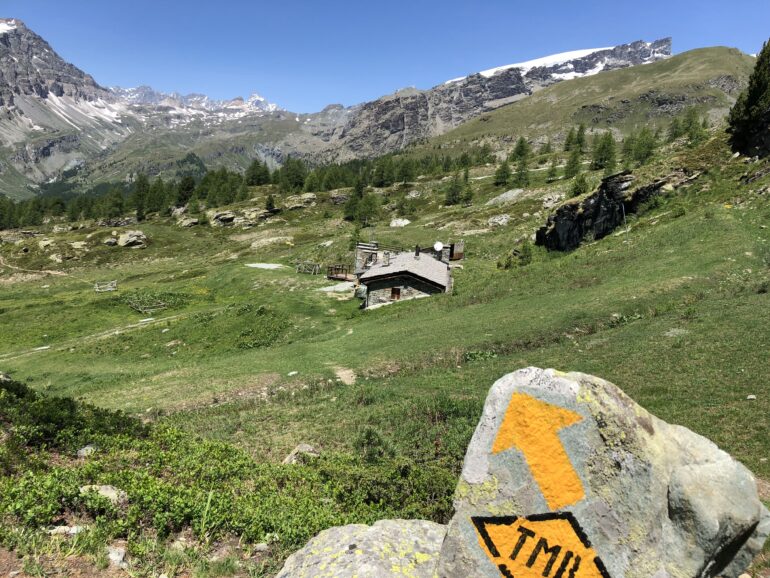
Multi-Country hut-to-hut hiking on the Tour de Monte Rosa
Walking the Tour de Monte Rosa (TMR) route through Italy and Switzerland, an unfolding gallery of panoramic mountains, quaint villages, and idyllic streams greets your eager eyes. Perfectly set stone trails seem to exist just for the enjoyment of hikers. It might be hard to imagine walking along this sweeping path with an enormous load of salt and spices on your back. But, in fact, that is exactly the use these “roads” were originally built to serve.
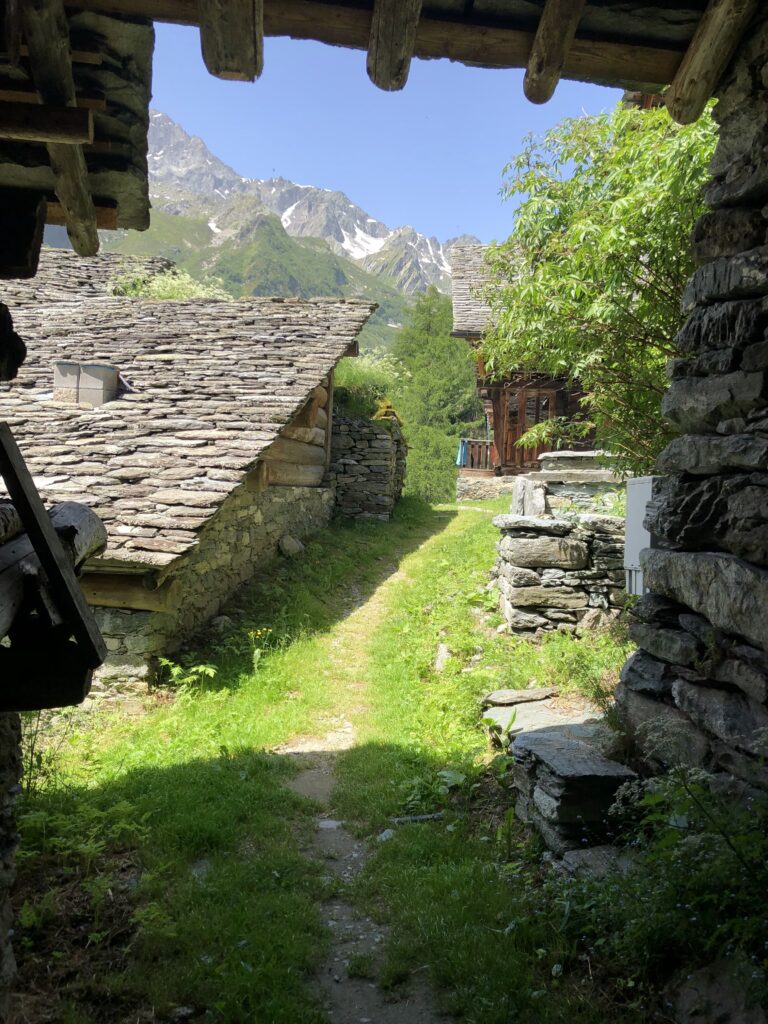

View to the Monte Rosa Massif from the breakfast table at Rifugio Pastore
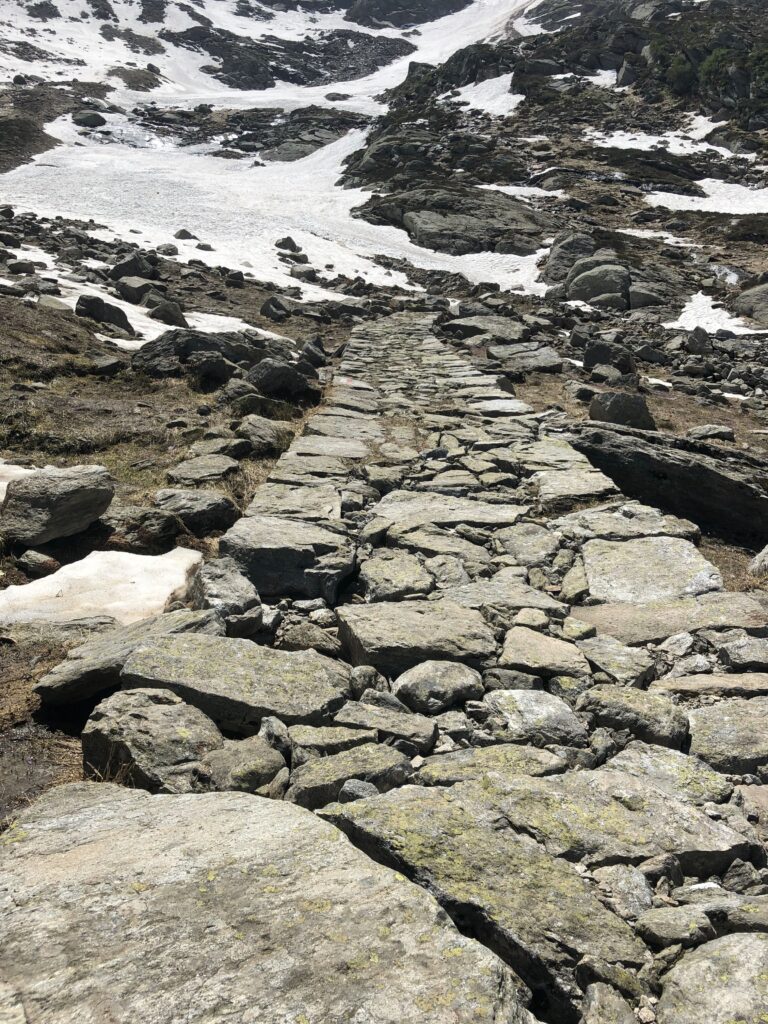
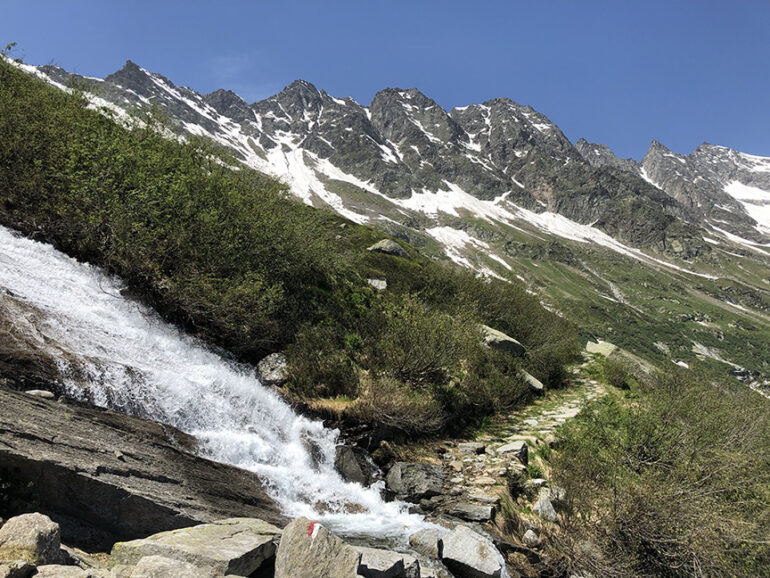
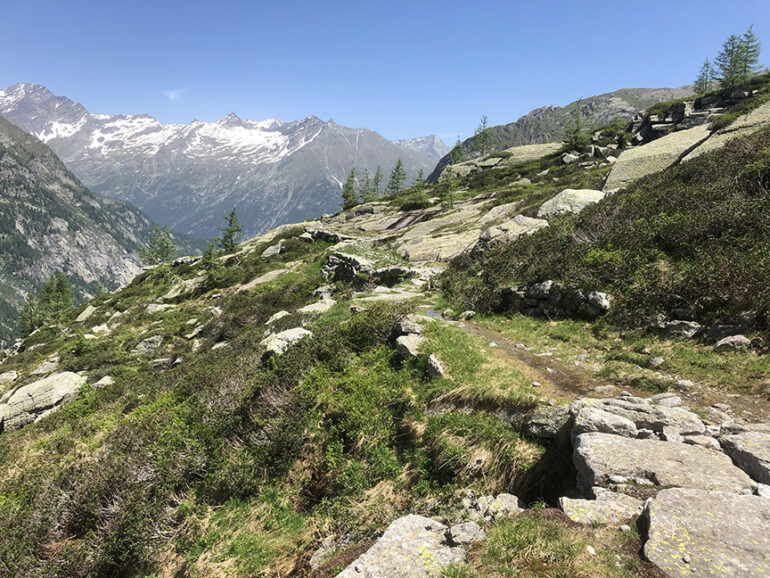
A Brief History of the Hiking Route
The Monte Moro Pass was once a local trade and seasonal migration route for the Walser people, some of the region’s most influential inhabitants. Walser refers to people from the upper Valais region (or Wallis in German) who had a long history of migrating to uninhabited areas, building new communities, and spreading their language, culture, and lifestyle to many areas in the Alps. You’ll notice the Germanic flavor to settlements even on the Italian side of the mountains. The trail over Monte Moro was forged as a mule trail for traders crossing between these 2 valleys.
Today, the Madonna delle Nevi (Madonna of the Snow) watches over the pass. She was placed in 1966 and is a popular destination for many local Catholics during the feast days in early August. This small area is popular for both skiing and hiking, with local lifts from Macugnaga that make access easy. Its proximity to the Italian Lakes District also makes it a popular destination for Italians looking to exchange big city hustle for the ease of smaller mountain villages.

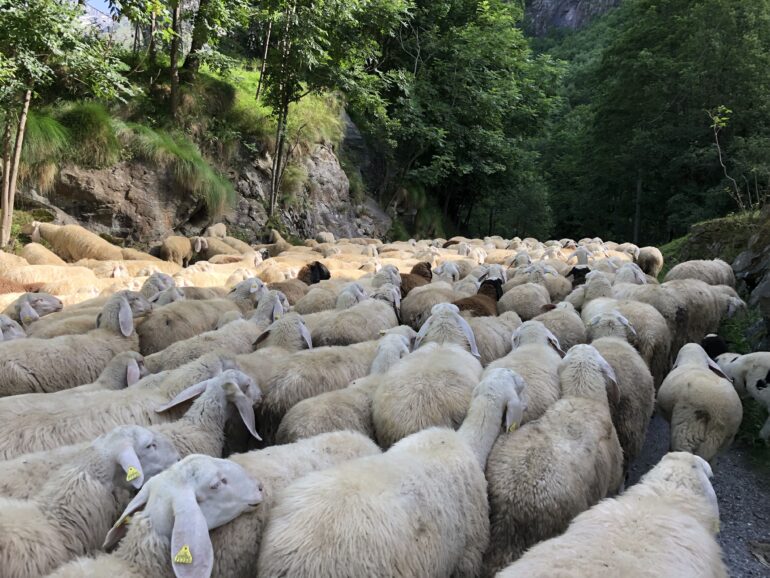
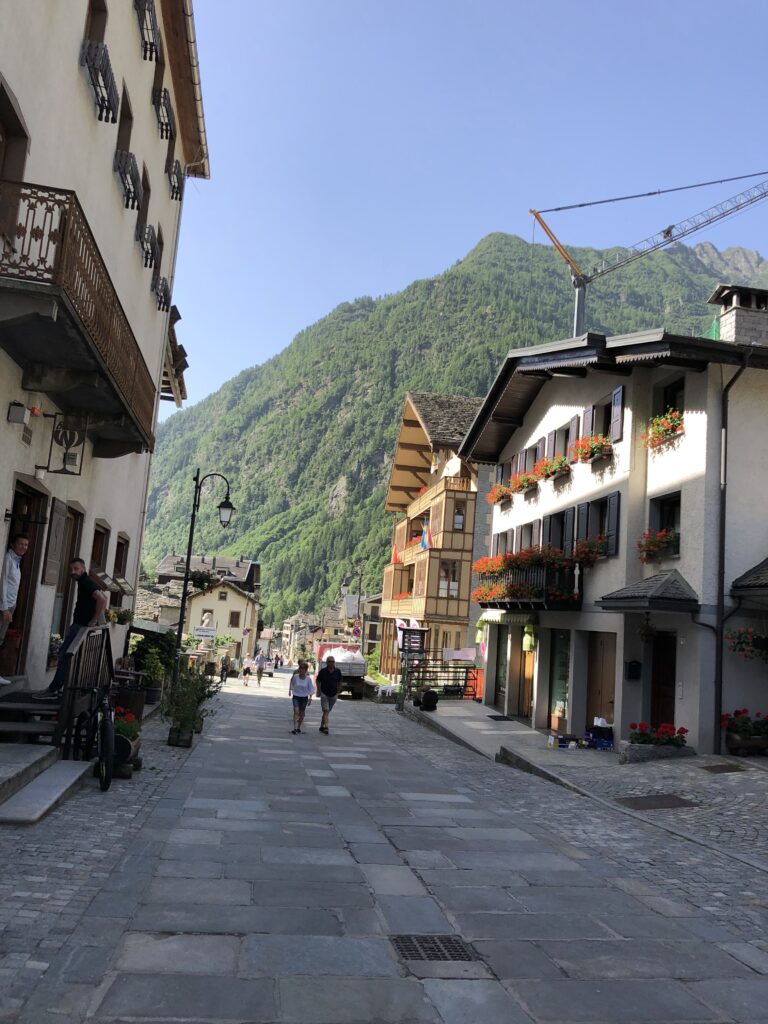
Further west, the Theodul Pass linking Italy’s Aosta Valley and Switzerland’s Valais Canton historically served as a bridge for resources, religion, and politics. Sometimes it even meant survival when the strain on resources grew with populations in both areas. The pass remains a formidable obstacle for those traveling across the border between Zermatt and Cervinia, with a crossing of the Theodul glacier still necessary. But crossing the Theodul will soon be much easier. A new cableway connecting the Matterhorn Glacier Paradise station and the Testa Grigia station above Cervinia is in the works. Skiing has replaced the trading of goods. But the pass remains an important link between the people and economies of the region.
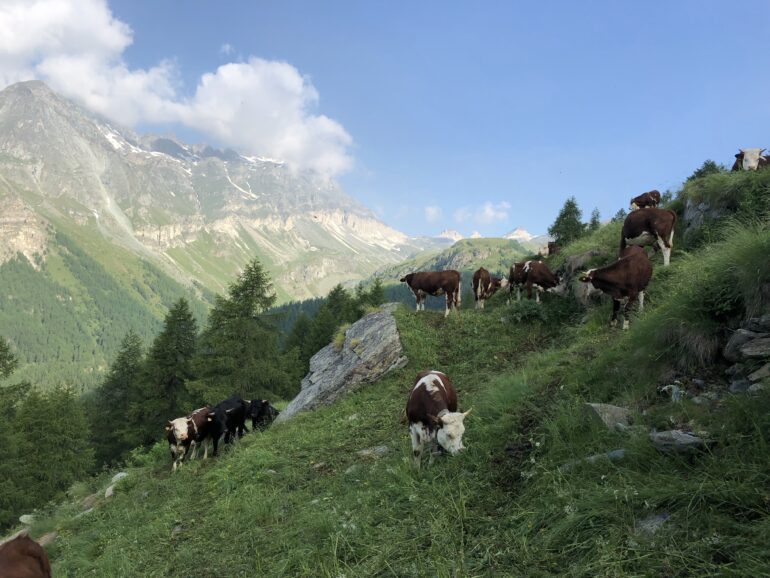

Hiking the Tour de Monte Rosa Today
The convenience of modern travel makes access to the Alps fairly straightforward. The trails surrounding the Monte Rosa massif still serve as the most direct path of travel between the remote valleys you’ll visit here. Trading may be done a little differently now, but these paths are still well-used. For hundreds of years, they have held up extremely well and are still traveled much like they were back then: on foot.
Are you looking to explore this route? Check out our Private Guided Tour of Monte Rosa or our Self-guided Deluxe Tour of Monte Rosa.

